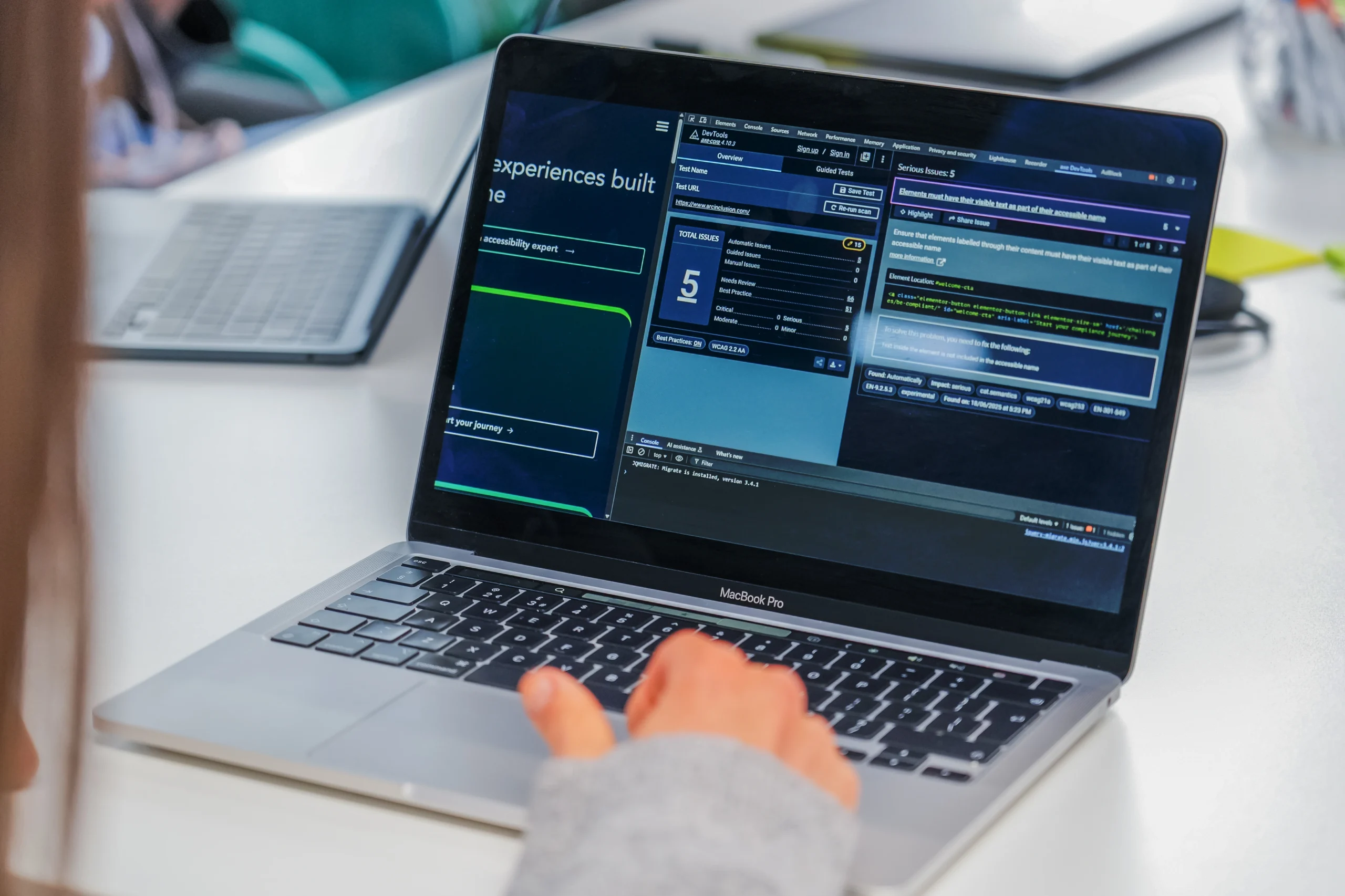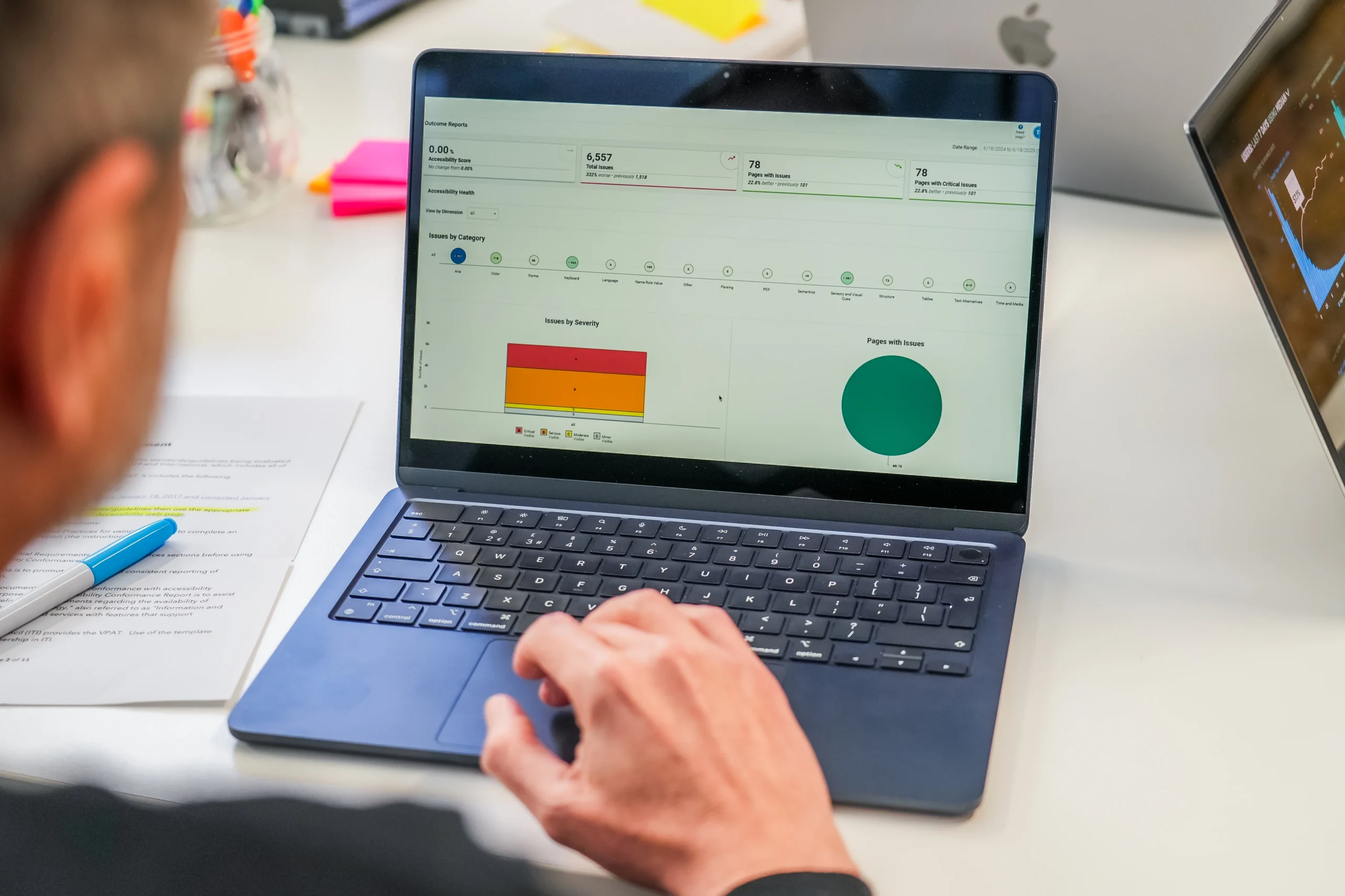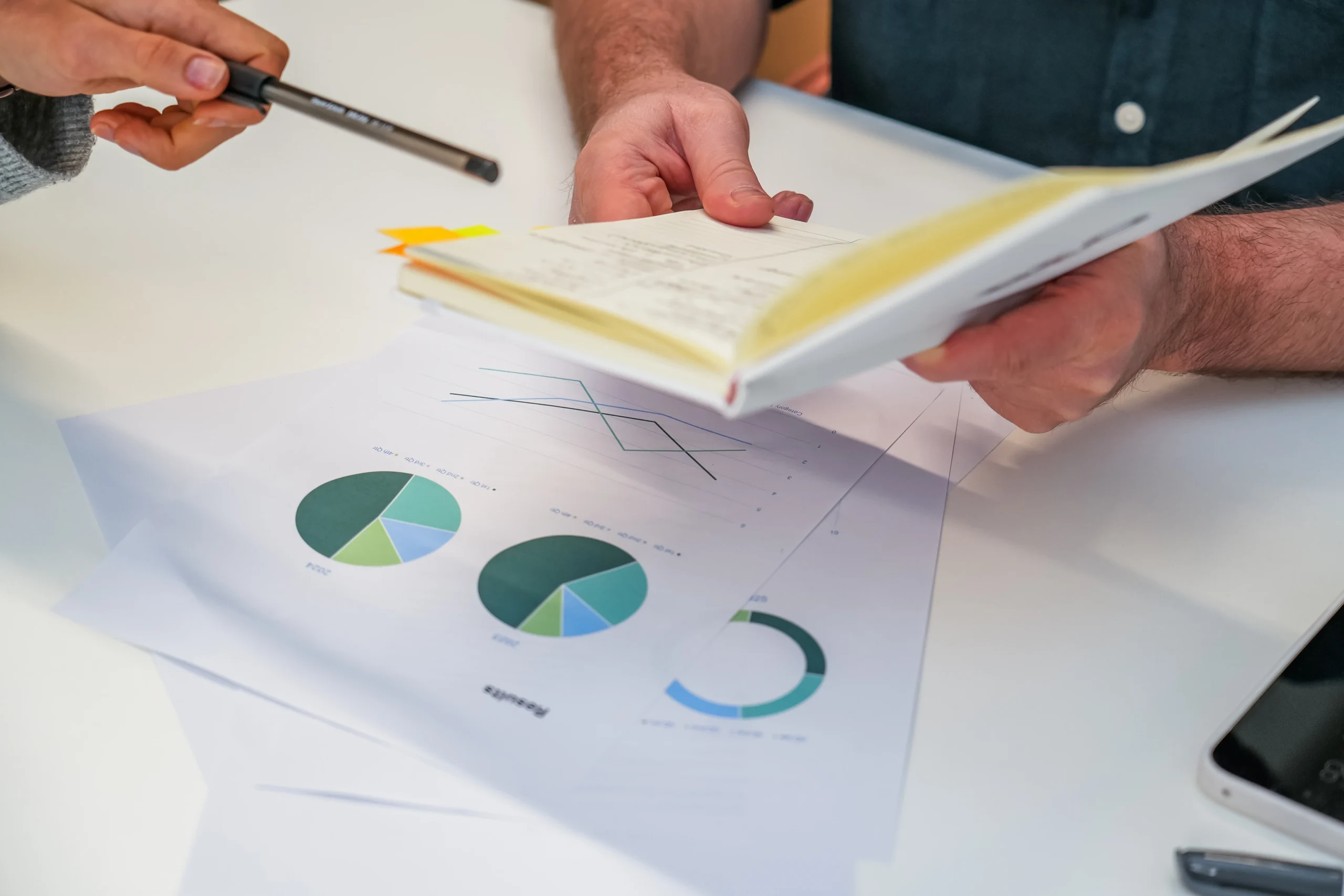Website Accessibility Monitoring
Seamlessly manage the accessibility health of all your digital assets in one place.
How website monitoring works
Keep your evolving digital estate accessible with a unified remediation platform.

Scan & monitor accessibility
Automated tools continuously check for accessibility issues across your selected digital properties, providing instant alerts on updated content and health status updates.

Analyse & prioritise issues
by severity and user impact, allowing teams to focus on high-priority fixes.

Integrate & fix accessibility
Push issues directly into your team’s workflow, streamlining remediation and reducing time
to resolution.

Measure & improve compliance
Benchmark your progress with clear, customisable reports and track ongoing health metrics to ensure long-term success.
Why it works
Cost efficiency
Automate checks and proactively integrate remediation to save time and resources.
Lower legal risks
Continuous tracking helps you stay compliant, catching risks before they become liabilities.
Scalability
Combine audits and scans for a clear, shared view of accessibility across all your digital assets.
Sustainability
Maintain progress with a
platform that supports multi-
region governance.
Related solutions
98%
of websites
fail accessibility standards - ensure yours isn’t one
of them.
FAQs
What is website accessibility monitoring?
Website accessibility monitoring is the fundamental process of scanning your website to detect any issues that could prevent users with disabilities from using it. Automated web accessibility monitoring tools continuously check for accessibility issues across your site, providing instant alerts for new and updated content, as well as your overall site health.
They track compliance with standards like the Web Content Accessibility Guidelines (WCAG) and show you how accessible your site is, where it should be, and what improvements should be made to deliver a better experience for all users.
In addition to measuring your compliance, they also provide a clear picture of your progress over time, so you can track the impact of your improvements and maintain ongoing accessibility.
What are the types of website accessibility monitoring?
The two main types are automated and manual monitoring. Together, they provide you with a comprehensive view of how accessible your site is and where improvements are needed.
Automated monitoring uses specialised web accessibility monitoring tools to scan your website for non-compliant features and common issues, such as missing alt text, poor colour contrast, or keyword navigability issues. These tools can also provide instant alerts for when site elements present accessibility risks and site health reports so you can prioritise any issues.
Manual monitoring is where accessibility experts and testers come in to review your site as a real user would, often using assistive technologies like screen readers. They will usually check how easy it is to navigate through pages, interact with content, and understand messages or instructions. The aim is to identify any areas which may present barriers for individuals with disabilities.
Why is accessibility monitoring important?
Accessibility monitoring is crucial for ensuring that everyone can use and experience your site in the same way, regardless of ability. It is also essential for staying compliant with standards like WCAG and with laws like The European Accessibility Act 2025.
Without regular monitoring, accessibility issues can easily appear when new pages are added, content is updated, or designs are changed.
Continuous website accessibility monitoring gives you a framework to:
Stay compliant
Improve user experience
Respond to issues quickly
Track progress over time
How often should you monitor your website for accessibility?
Accessibility monitoring should be integrated into your process rather than a one-time check. Websites can change frequently, with new pages, designs, and content changes, but each update can introduce accessibility issues.
Continuous monitoring, both manual and through an automated website monitor, is recommended to catch any issues as soon as they appear, particularly after any big changes, such as adding interactive elements, redesigns, and when legal or accessibility guidelines are updated.
Even without significant changes, monitoring should be a consistent part of your organisations website maintenance.
The more you test the better, but for those looking for an exact amount, ideally once a month is a good starting point to catch any emerging issues.